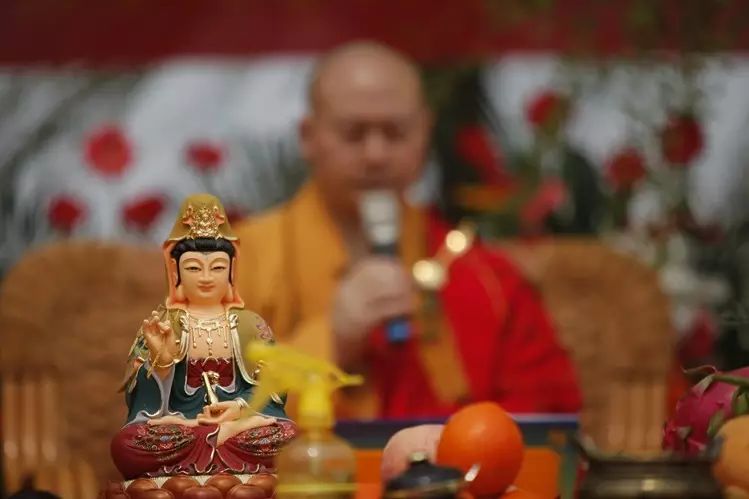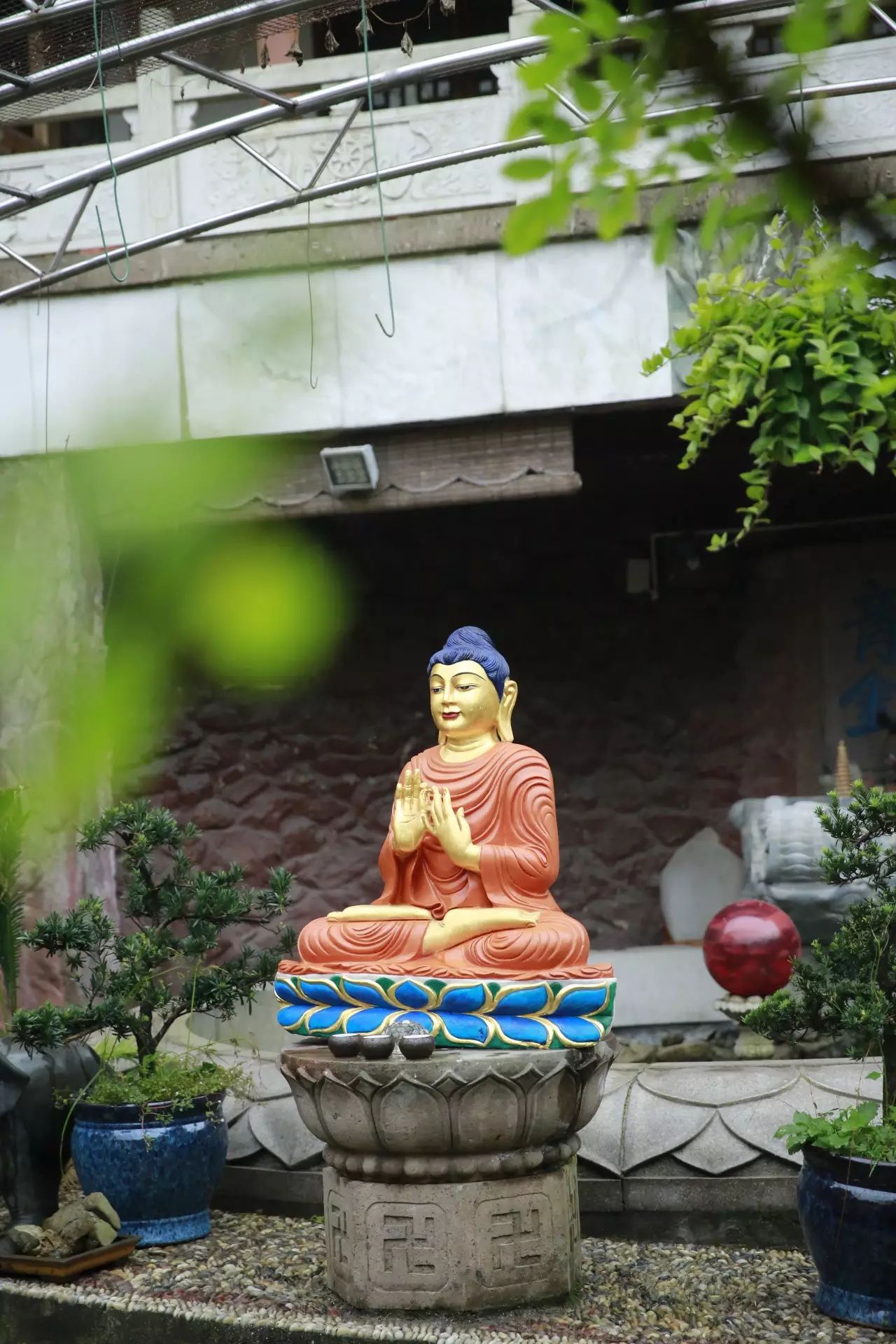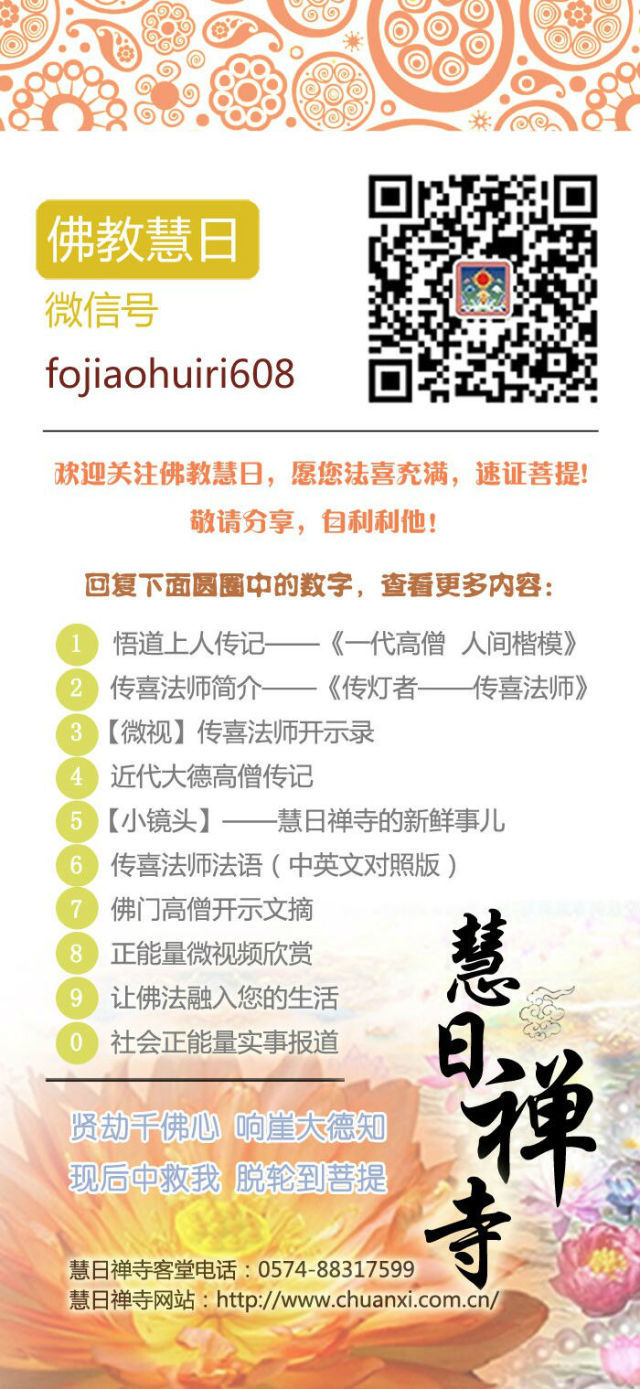如来九十七种大人相,我们能够听一听也能得很多福报

【无尽意,观世音菩萨有如是自在神力,游于娑婆世界。尔时无尽意菩萨以偈问曰:】其实,“ 无尽意”也代表很多很多听法的人,这时候, 无尽意菩萨想总结一下这些问题, 以偈的形式再次问佛, 这叫“重颂”, 就是将前面长文的意思, 归纳成五字或七字一句的形式,再复述一遍。
世尊妙相具 我今重问彼
佛子何因缘 名为观世音
世尊的妙相具足, 这个相, 相而非相, 非相而相,故称为 “妙相”。《华严经》第三十四“如来十身相海品”中, 略举出如来九十七种大人相, 我也略略跟大家讲一下, 我们能够听一听也能得很多福报:

1. 佛的顶上有三十二相;
2. 佛的眉间有一相;
3. 佛的眼有一相;
4. 佛的鼻有一相;
5. 佛的舌有四相;
6. 佛的上颚有一相;
7. 佛的牙有四相;
8. 佛的齿有一相;
9. 佛的唇有一相;
10. 佛的颈有一相;
11. 佛的肩有五相;
12. 佛的胸有十一相;
13. 佛的手有十三相;
14. 佛的阴藏有一相;
15. 佛的坐处有二相;
16. 佛的大腿有二相;
17. 佛的小腿有三相;
18. 佛的足有十三相, 共略举九十七种大人相。
佛的相好庄严, 犹如大海无穷无尽, 所以叫 “相海”。 我们平时顶礼佛陀, 先是合掌, 然后跪下来趴在地上, 然后翻开两掌, 请佛陀从虚空里站到我们的手掌上, 我们把头和脸贴在佛的脚面上, 这叫“头面接足礼”。
Eternal (Lecture on the Guan Yin Bodhisattva Universal Door)(70)
By Master Chuanxi
Aksayamati, Guan Yin Bodhisattva has unrestrained transcendental power as such and travels around the Saha world. Thereupon, Aksayamati asked the Buddha in verse form:
In fact, ‘Aksayamati’ also represents numerous audiences in Dharma Assemblies. Aksayamati Bodhisattva hopes to recap the questions He asked in the form of Gatha again. It is called Geya, which is the repetition of the long paragraphs above in the form of five or seven characters per line.
My wonderful-laksanas-possessing World Honored One,
I now ask you once again
for what reason is the Buddha's son named Perceiver of the World's Sounds (Guan Shi Yin)?

World-Honored One possesses wonderful laksanas. This laksanas is not a real form, but form alike or non-form alike, and thus called wonderful laksanas. In thirty fourth chapter of the ten forms of body and sea of laksanas in Avataṃsaka Sutra, examples of ninety seven great forms are illustrated. I am going to briefly explain them to you. Only by knowing them briefly, can we gain lots of merits:
-1. thirty two forms of the top of the Buddha’s head;
-2. one form between the Buddha’s eyebrows;
-3. one form of the Buddha’s eyes;
-4. one form of the Buddha’s nose;
-5. four forms of the Buddha’s tongue;
-6. one form of the Buddha’s upper jaw;
-7. four forms of the Buddha’s teeth;
-8. one form of the Buddha’s teeth;
-9. one form of the Buddha’s lips;
-10. one form of the Buddha’s neck;
-11 five forms of the Buddha’s shoulders;
-12.eleven forms of the Buddha’s chest;
-13.thirteen forms of the Buddha’s hands;
-14. one form of the Buddha’s hidden private part;
-15. two forms of the Buddha’s hips;
-16. two forms of the Buddha’s thighs;
-17. three forms of the Buddha’s calves;
-18. thirteen forms of the Buddha’s feet;
There are seventy nine great forms in total. The Buddha’s appearance is wonderful and solemn just like a sea that is boundless, thus they are called the ocean of forms. When we worship the Buddha, we put our palms together, kneel down with our four limbs touching the ground and turn our palms over, invoking the Buddha to stand on our palms from the void. Then, our head and face touch the feet of the Buddha. This ritual of worship is called ‘bow and touch the feet of the Buddha with the head ’.
爱出者爱返,福往者福来。随喜转载,功德无量。
